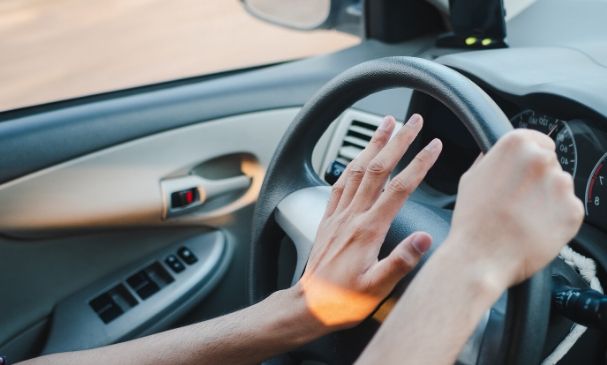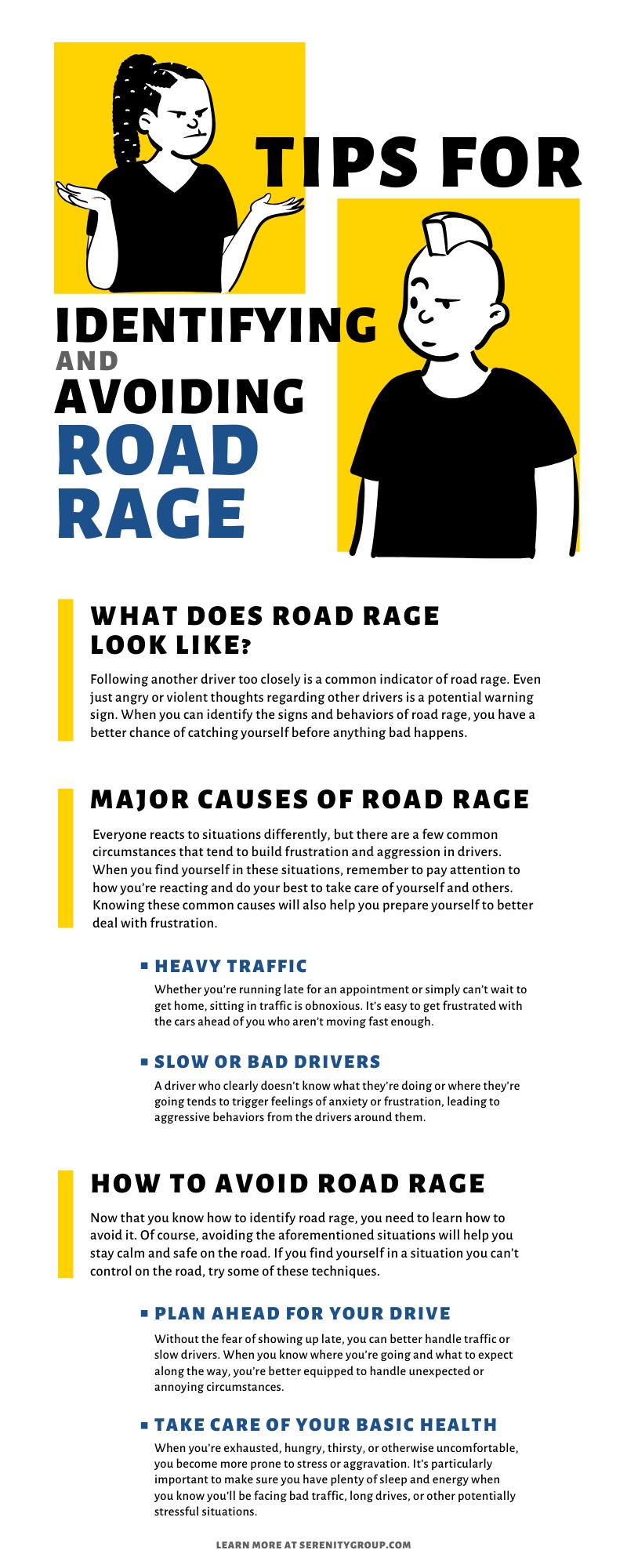Tips for Identifying and Avoiding Road Rage

Everyone knows how important it is to stay safe and responsible while behind the wheel. Unfortunately, you can’t control every detail and circumstance that occurs when you’re on the road. Your fellow drivers, construction zones, and other factors all affect your daily commute and you don’t get a say about it. This lack of control—and the stress or hassle that can stem from it—often leads to anger and frustration. Road rage is unfortunately common in drivers of all ages and experience levels. Even someone who is normally a calm and responsible driver can catch themselves honking impatiently or yelling at other cars on occasion. Road rage can escalate quickly and turn into severe financial and legal consequences. As such, it’s important to understand the signs of road rage as well as how you can avoid it. To help you stay safe behind the wheel, here are our tips for identifying and avoiding road rage.
What Does Road Rage Look Like?
When many people think of road rage, they think of aggressive horn honk, rude gestures, or foul language toward other drivers. However, these aren’t the only indicators of road rage. Other common behaviors include unsafe driving habits. For example, someone who is frustrated behind the wheel might speed to pass or cut off another driver. Following another driver too closely is also a common indicator of road rage. Even just angry or violent thoughts regarding other drivers is a potential warning sign. When you can identify the signs and behaviors of road rage, you have a better chance of catching yourself before anything bad happens. Everyone experiences frustration, but if you find your emotions turning into any of these behaviors, it’s time to take a deep breath and work on calming down.
Major Causes of Road Rage
In addition to knowing the most common behaviors that stem from road rage, it’s also important to know what causes those behaviors in the first place. Everyone reacts to situations differently, but there are a few common circumstances that tend to build frustration and aggression in drivers. When you find yourself in these situations, remember to pay attention to how you’re reacting and do your best to take care of yourself and others. Knowing these common causes will also help you prepare yourself to better deal with frustration. For example, if you know you’ll be driving through heavy traffic that might disrupt your plans, you can prepare by finding an alternate route or putting on your favorite music to make the experience better.
Heavy Traffic
We’ve all been there: stuck on the road, bumper to bumper with other impatient drivers, wanting nothing more than to arrive at our destination. Whether you’re running late for an appointment or simply can’t wait to get home, sitting in traffic is obnoxious. It’s easy to get frustrated with the cars ahead of you who aren’t moving fast enough. Plus, traffic means there are a lot of other drivers around you who might feel annoyed or aggressive, which can quickly lead to dangerous escalations.
Slow or Bad Drivers
Even without heavy traffic, a slow driver can ruin your day. Trailing behind someone in a no-passing zone is an easy way to get annoyed or impatient. This is also true when you come across someone who appears uncertain or uncomfortable on the road. This can be someone swerving to just barely catch their exit, yielding their right of way, or otherwise driving without confidence. A driver who clearly doesn’t know what they’re doing or where they’re going tends to trigger feelings of anxiety or frustration, leading to aggressive behaviors from the drivers around them.
Other Enraged Drivers
Aggression often leads to more aggression. Road rage can escalate quickly as more and more drivers get involved. You might be comfortable on the road, but someone who is already frustrated might cut you off or speed past you unsafely. This can trigger your own anger. You might honk back or speed up to follow them. Suddenly, both of you are now in a bad mood and the aggression on the road has doubled.
How to Avoid Road Rage
Now that you know how to identify road rage, you need to learn how to avoid it. Of course, avoiding the aforementioned situations will help you stay calm and safe on the road. Unfortunately, that’s not always possible. If you find yourself in a situation you can’t control on the road, try some of these techniques.
Plan Ahead for Your Drive
One of the best tips for identifying and avoiding road rage is to prepare for your drive. Look ahead at where you’re going so that you’re comfortable with directions and timing. Planning ahead will also help you avoid rushing. Without the fear of showing up late, you can better handle traffic or slow drivers. Remember that confidence and comfort are both essential to staying calm. When you know where you’re going and what to expect along the way, you’re better equipped to handle unexpected or annoying circumstances.
Take Care of Your Basic Health
When you’re exhausted, hungry, thirsty, or otherwise uncomfortable, you become more prone to stress or aggravation. You might also have poorer decision-making skills than usual. You should avoid driving when tired or overly stressed at any time. However, it’s particularly important to make sure you have plenty of sleep and energy when you know you’ll be facing bad traffic, long drives, or other potentially stressful situations.
Create a Comfortable Car Interior
Part of staying calm is creating a calming environment. If you’re overheated, listening to angry music, or dealing with noisy kids or pets in the backseat, that can add to your frustration levels. Try to minimize these stressors before you even hit the road. Make sure your car is a comfortable place that you enjoy being in. Get comfortable seat covers and make sure your temperature controls work well. Stock up on soothing music, interesting podcasts, and other entertainment you can listen to for a distraction. Keep pets safely in carriers and teach your kids to stay calm while riding in the car. When your car is a comfortable place, it can make even the most frustrating road interactions much more bearable.
Road rage is more than just an unpleasant feeling; it can lead to dangerous situations and severe consequences. If your road rage causes you to violate traffic laws, you might face some serious charges. You might even need to obtain SR22 insurance in order to reinstate your license. Fortunately, Serenity Group is here to help. We’ll help you understand and find SR22 insurance in Denver, Los Angeles, or wherever you’ve experienced trouble on the road.


Recent Comments